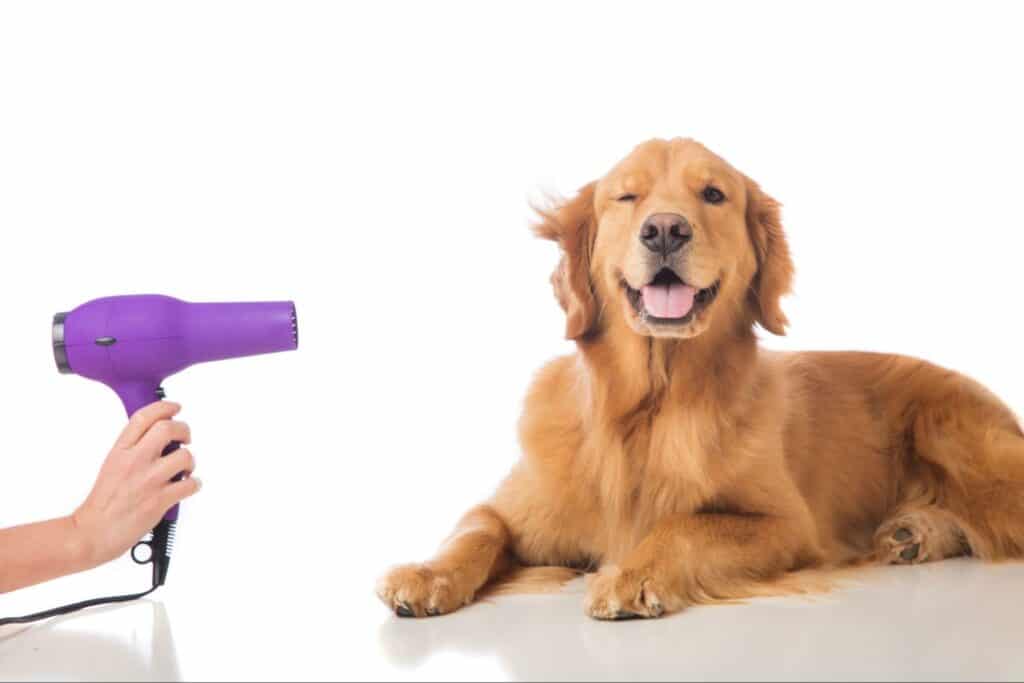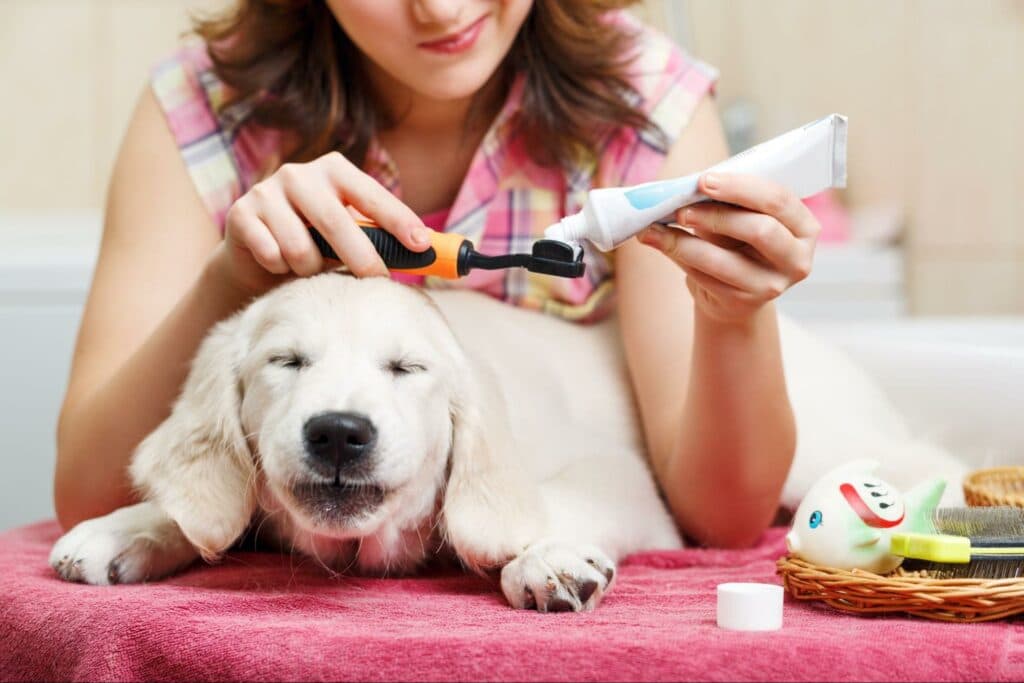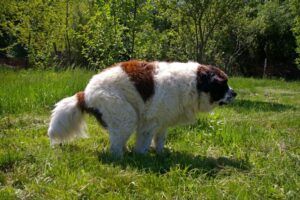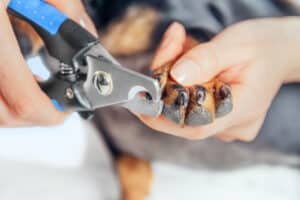Regular grooming is an essential part of responsible dog care. If you don’t have a routine, start small. Brush one day, bathe the next, and trim the nails. The shorter you can keep each session, the better.
Brushing Tips
Dogs need to be brushed regularly to keep their coats healthy and free of mats and tangles. While this may seem like a hassle, you can easily do it with the right tools and techniques. Below we will share the best ways to brush your dog’s fur. So if you’re looking for information on keeping your dog’s coat healthy and looking its best, read on!
Check for Ticks as You Brush
You may notice the bugs themselves or tiny black dots.
Determine How Often You Need to Brush
Most short coats require weekly brushing, but longer coats may require daily attention.
For Smooth, Short Coats
Use a rubber brush, then a bristle brush, and then polish with a chamois cloth.
For Short, Dense Coats
Use a slicker brush to remove tangles, followed by a bristle brush.
For Long Coats
Use a slicker brush to remove tangles, and be very gentle when removing mats. Then follow it with a bristle brush.
Don’t Forget the Tail and Feet
Particularly for dogs with longer coats.
Bathing Tips
Are you one of those people who think dog bathing is a waste of time? If so, you’re not alone. Many pet owners believe dogs don’t need to be bathed as often as they should and most certainly don’t need all the fancy shampoos and conditioners available. But is this true? Take a look at some dog bathing tips that might make you change your mind.
Determine How Often Your Dog Needs a Bath
Depending on the weather and your dog’s recent activities, you may want to bathe your dog every one to three weeks.
Use a Dog Shampoo
Dog skin is different from humans, so you want to ensure the shampoo is mild enough to avoid irritation.
Start by Brushing
It will make the bathing process easier and more effective.
Use a Bath Mat
If your pup is in the tub, this helps prevent slipping.
Add Lukewarm Water
Be careful not to burn your dog or make it too cold, and only use about 3 to 4 inches in the tub.
Don’t Spray Directly in the Nose, Eyes, or Ears
A plastic cup or a spray hose can help you direct the water where you want it to go.
Rinse Well
One of the most common grooming mistakes is not properly removing all of the shampoo, leaving it on the skin to irritate your dog.
Check the Ears
Look in your pup’s ears. Do you notice any foul odors or a lot of debris? Consult your vet
Use a Low Heat Setting on the Blow Dryer
A dryer can effectively keep your dog from making everything in your house wet as he dries, but be careful not to burn your pup. You can also help keep it safe by not pointing it directly at your puppy but a little to the side.
Try a Bath Toy
If your dog is overexcited and mouthy during bath time, it may redirect some attention to something else.

Nail Trimming Tips
How often do you find yourself in a wrestling match with your dog over their nails? Or are they so tough that it is easier just to outsource the job of trimming them? If this sounds like something that would be painful for both parties involved, don’t worry! With our “dog-friendly” approach, we can make sure your furry friend comes away feeling pampered. If you want to make sure your dog’s nails don’t grow too long, it’s best not to trim them down into a stubby little nub. A more realistic goal (and one that can help prevent cutting) would be getting their nail length to just above where the floor meets the rug so they cannot scratch at anything.
Cut Carefully
What’s scarier than cutting a dog’s nails? Cutting blood vessels inside of them! It’s not pleasant for either party, but luckily, you can use some tricks to stop the bleeding if done accidentally. One idea would be using styptic powder and pressure or baking flour in an emergency. Just make sure not to apply too much force since this could cause more pain than what was initially inflicted on your pup by mistake during trimming time.
Start Early in Age
We recommend that you begin body-handling exercises when your pup is still a puppy. Gently familiarizing him with all of the equipment and how it’ll be working can help teach squeamishness and let them know this isn’t painful or scary!
Trim at Home
Cutting your dog’s nails at home is a great way to keep them comfortable while taking care of this essential grooming task. Busy pet professionals may need to use a groomer or a vet. However, this may not be the most relaxing way. Nail trimming at home ensures that your dog is relaxed and at ease throughout each step of the process.
Understand Their Reactions
When you take the time to understand how your dog feels, it will help shift what kind of reaction they have during nail care. Your pet may not be trying on purpose when they react in fear at the paws being stuck with clippers!
Choose Tools Wisely
Try something new if you find that your dog has had an unpleasant experience with a particular trimming tool. It’s easier to build up positive associations instead of trying to restore the negative ones!
Dog Teeth Brushing Tips
The dog’s teeth are also in need of attention. Dogs can develop tooth decay and gum disease like humans if their pearly whites aren’t regularly brushed. All you’ll need is some brushing tools designed for this purpose: either an electric or manual brush, depending on what type suits you best (or even both!), plus fluoride treatment capsules which help deter future abscesses by killing off bacteria quickly before they start growing again. Below are some more essential tips to follow for healthy gums and teeth.
Purchase Toothbrush and Toothpaste
You can buy toothbrushes for your dog at a pet store or online. They have longer handles that are easy to grip, making them perfect if you want quick access between the back teeth! Be sure to use toothpaste specially formulated for dogs. Some ingredients in human toothpaste can be toxic.
Choose Location and Time
You want to do the teeth brushing in an area of your home that is free from distractions such as pets and children, has good lighting, and promotes a calm atmosphere for your pup.
Test with Fingers
Specific training methods teach dogs to be calm during this touching procedure. First, lift the top lip with one hand while touching the lower incisors; then push down gently. Using your fingers first allows your pup to become familiar with the process of someone checking and cleaning their teeth.
Introduce the Toothbrush and Toothpaste
Before you start brushing, introduce the toothbrush without anything on it. Slowly put it in the mouth and work your way around the entire mouth, front, back, top, bottom, and sides. Give a reward if they have tolerated this action well. Next, show your pup the toothpaste tube, put a little on your finger, and allow them to lick it off.
Begin Brushing
Add the toothpaste and start brushing. Start front to back, top to bottom. The bottom inside will be a bit more complex and can be added in future brushings as your pup becomes more comfortable with the brushing.
Reward and Praise
Make sure you give verbal praise throughout the process. Teeth brushing is unnatural for dogs, so you want to build their confidence and familiarity with this part of grooming. Throughout each step, you can give a treat. As time goes on and they become accustomed to their teeth being brushed, you can slowly remove the food rewards.
Certain breeds require special attention between the folds and ears, so droopy ears should be monitored. Talk to your veterinarian to get grooming tips specific to your pup.
What’s your dog’s grooming routine like? Tell us in the comments.











